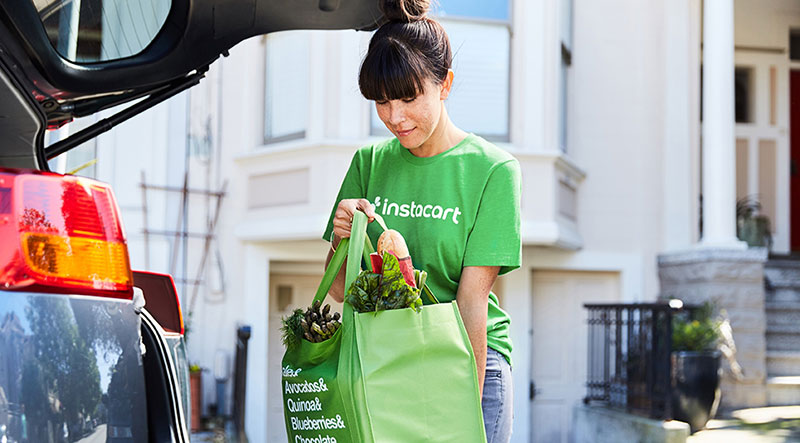Instacart is planning to trial 15-minute grocery delivery as soon as February 2022, according to reporting around a purported leak by The Information. The grocery delivery heavyweight offers two-hour delivery and debuted 30-minute delivery in select markets earlier this year.
The news comes as rapid grocery delivery, which exploded in Europe during 2020, arrives in the United States. Several startups, including Getir, Jokr, Gorillas and Buyk are making rapid deliveries in New York City and parts of Chicago and Boston.
The company brings a new business model to the rapid delivery space. While the incumbent startups deliver their own products or buy from wholesalers, Instacart functions as a marketplace, facilitating the sale and delivery of products from its grocery and retail partners. And while the incumbents employ their own delivery drivers, The Information reported that Instacart has asked several logistics firms to submit proposals for their rapid delivery business.
Instacart is committed to its marketplace business model. “Unlike other companies entering the grocery and convenience space, we’re focused on empowering—never competing with—retailers,” a company spokesperson told The Information.
It’s unclear if rapid grocery delivery can be a profitable business in the United States. According to The Information, Jokr lost $13.6 million on $1.7 million in revenue during the first seven months of 2021. It’s even more unclear if a company can outsource both product and delivery and still manage to turn a profit.
Jokr, Getir, Gorillas and Buyk all employ dark stores — small grocery stores not open to the public — to fill delivery orders. Instacart has historically filled orders from grocery stores but is moving toward the dark store model. In July, the company announced a partnership with Fabric to develop software to help operate what it calls micro-fulfillment centers, akin to dark stores.
In addition to Instacart’s planned trial, DoorDash debuted rapid delivery out of a single DashMart in NYC’s Chelsea neighborhood. The entrance of delivery heavyweights is a signal that rapid grocery delivery is one of the next phases of the blurring market share battle, at least for the medium term. Grocers, convenience store operators and even restaurants will need to find a way to compete with this new and well-funded sector.




